
Initial set-up.
1. Two players, the king's side vs attackers. There are twice as many attackers as defenders. One of the defenders is the king's knight, and four of the attackers are viking commanders.

Initial set-up.
2. The attackers' side moves first, the players then take turns.
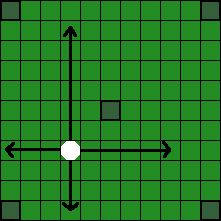


A piece is only captured if the trap is closed by the aggressor's move, it is therefore permitted to move in between two enemy pieces.
The king may take part in captures.
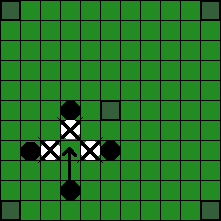

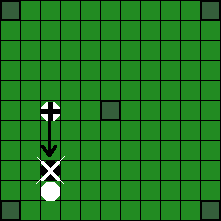
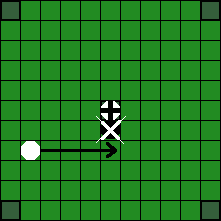

Capture of pieces.

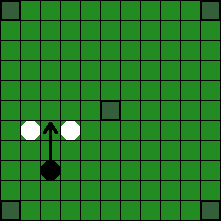
The piece is not captured.
The knight can capture an enemy piece by short-jumping over it, as well as by the ordinary way of capture.
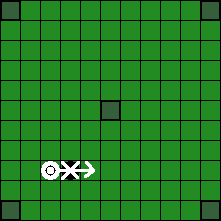
The knight jumping.
If on a square next to the throne, the attackers must occupy the three remaining squares around him.

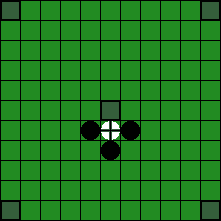
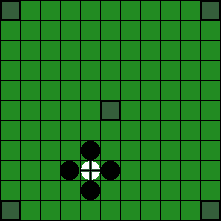
The king is captured.


The king is not captured.
5b. When the king is not on or next to the throne, two viking commanders can sandwich and capture the king, and one commander can capture the king against one of the four restricted corner squares.


Commanders capture the king.

Restricted squares are hostile, which means they can replace one of the two pieces taking part in a capture. The throne is always hostile to the attackers, but only hostile to the defenders when it is empty.
The four corner squares are also restricted and hostile, just like the throne.
The board edge is NOT hostile.
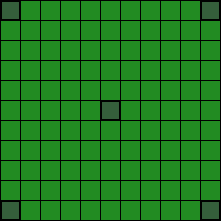
Five restricted squares.
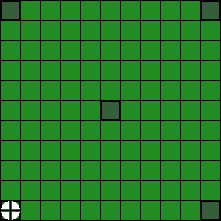
11. If a player cannot move, he loses the game.
12. If it is not possible to end the game, fx. because both sides have too few pieces left, it is a draw.
|
Some examples of perpetual repetitions. Perpetual repetition - the king must find another move:  White is confined and cannot avoid perpetual repetitions and lose: 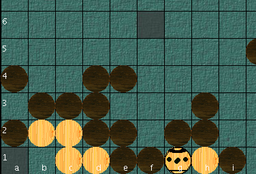

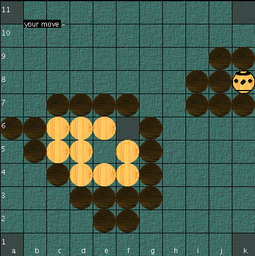
|
The Berserk Hnefatafl game was proposed by Aage Nielsen, Denmark, October 2011.
The Berserk Hnefatafl rules are deduced only from combining the Fetlar Hnefatafl, the Saami Tablut, the R.C. Bell's reconstruction of the Roman soldiers' game Ludus Latrunculorum, the Bergen Museum set of Storhaug Hnefatafl playing pieces and the Somali descendants of Latrunculi, the games Seega and High Jump.
See more here:
The origin of the Viking board game Hnefatafl and the Berserk rules.
English text and diagrams: Adam Bartley (Norway) and Delray Curtis, "jrton80" (USA).